This article was co-authored by Trudi Griffin, LPC, MS. Trudi Griffin is a Licensed Professional Counselor in Wisconsin specializing in Addictions and Mental Health. She provides therapy to people who struggle with addictions, mental health, and trauma in community health settings and private practice. She received her MS in Clinical Mental Health Counseling from Marquette University in 2011.
There are 18 references cited in this article, which can be found at the bottom of the page.
wikiHow marks an article as reader-approved once it receives enough positive feedback. In this case, 86% of readers who voted found the article helpful, earning it our reader-approved status.
This article has been viewed 236,882 times.
Dyslexia is a learning disorder characterized primarily by difficulty reading. Affecting up to 20% of people in the United States, with millions more likely undiagnosed, dyslexia has to do with how the brain works and is not caused by poor education, intelligence, or vision. People with dyslexia often have trouble breaking down words as well as putting sounds together to write or pronounce words. Put differently, dyslexics struggle to convert language into thought (in listening or reading) and thoughts into language (in writing or speaking).[1] Thus, individuals with dyslexia usually do not read as accurately or with as much fluency or speed as people without dyslexia.[2] The good thing is that although dyslexia is a lifelong issue, it can be treated and alleviated once it has been diagnosed. While the primary symptom is delay or difficulty in the ability to read, there are in fact number of ways to recognize dyslexia in pre-school children, school-aged children, and adults.
Steps
Recognizing Dyslexia in Preschool Children (Ages 3-6)
-
1Look for difficulties in talking and hearing. Dyslexia is characterized by problems decoding and processing language, so symptoms will appear in areas other than just reading.[3] One or two symptoms is not necessarily indicative of dyslexia, but if your child has many of these symptoms, you may want to speak with your child's pediatrician.
- Delayed speech (though this can have many other causes). Consult your pediatrician if you are concerned about your child's speech development. [4]
- Difficulty pronouncing words, including letter switching – i.e. “mawn lower” instead of “lawn mower.”[5]
- Difficulty breaking down words into sounds as well as the reverse, the ability to blend sounds to make words when speaking.[6]
- Difficulty with rhyming words together.[7]
-
2Look for learning difficulties. Because children with dyslexia have difficulty with phonological processing (the manipulation of sounds) and rapid visual-verbal responding,[8] they may exhibit some difficulties in basic learning, including: [9]
- Slowness to build their vocabulary. Usually dyslexic pre-school children only say a small number of words.[10]
- Slow recall of sounds, letters, colors, and numbers. Dyslexic children may also be slow to name even objects familiar to them.[11]
- Difficulty in recognizing their own names.[12] [13]
- Difficulty rhyming or reciting nursery rhymes.
- Difficulty remembering content, even from a favorite video.
- Note that writing errors are not necessarily indicative of dyslexia in pre-schoolers. Many kindergarteners and first-graders reverse their letters and numbers as they are just learning to write. However, this can be a sign of dyslexia in older children and if the reversal of letters and numbers in writing persists, your child should be tested for dyslexia.[14]
Advertisement -
3Look for physical difficulties. Because dyslexia includes problems with spatial organization and fine motor control, it can also have physical manifestations in young children, including:[15]
-
4Talk to your child’s pediatrician. If you are concerned that your child might have dyslexia, it's best to consult with your child's primary physician. Early diagnosis is vital in helping children learn to cope effectively with dyslexia.
- Professionals have a battery of tests that allow them to test and diagnose dyslexia in children as young as 5 years old.
Recognizing Dyslexia in School-Age Children (Ages 6-18)
-
1Look for difficulty reading. Dyslexia among children and young people is usually first recognized when they fall behind their peers in learning to read or in consistently reading below their age level. This is the primary indicator of dyslexia.[20] Reading problems may include:[21]
- A delay in learning the connection between letters and sounds.[22]
- The confusion of small words like “at” and “to” or “does” and “goes”.
- Consistent reading, spelling, and writing errors, even after being shown the correct forms.[23] Common errors include letter reversals (e.g., “d” for “b”); word reversals (e.g., "tip" for "pit"); inversions (e.g., “m” for “w” and “u” for “n”); transpositions (e.g., “felt” and “left”); substitutions (e.g., "house" and "home”).[24]
- Needing to read a short selection multiple times to comprehend it.[25] [26]
- Trouble understanding age-appropriate concepts.[27]
- Trouble taking notes and predicting what will happen next in a story or sequence.
Early intervention is key. "As soon as we noticed our daughter was struggling to put words and sounds together in kindergarten, we sought help. We were nervous about intervening in her learning too early but decided to work with a reading tutor after some debate. This was really helpful and showed us we didn't need to be worried about starting to help her too early on." - Jackie, mother of a daughter with dyslexia
-
2Watch for auditory (listening) and speech problems. The underlying cause of dyslexia is a problem with phonological processing, the ability to see or hear a word, break it down into discrete sounds, and then associate each sound with the letters that make up the word.[28] Though this makes reading particularly difficult, it often also impacts children's ability to listen and speak clearly and correctly.[29] Signs include:
- Problems comprehending rapid instructions or recalling sequences of commands.
- Difficulty remembering what is heard.
- Difficulty putting thoughts into words.[30] The child may also speak in halting sentences and leave sentences incomplete.[31]
- Garbled speech: wrong words or similar words substituted for what the child means.
- Difficulty making and comprehending rhymes.[32]
-
3Watch for physical symptoms. Because dyslexia includes problems with spatial organization, dyslexic children may also struggle with their motor skills. Common signs of problems with motor skills include:[33]
- Trouble with writing or copying. Their handwriting may also be illegible.
- Frequent confusion of left and right, over and under.
-
4Look for emotional or behavioral signs. Children with dyslexia often struggle in school, particularly as they see their peers reading and writing with relative ease. As a result, these children may feel less intelligent or like they have failed in some way.[34] There are a number of emotional and behavioral signs that may indicate that your child is suffering from a lack of diagnosis and treatment of dyslexia:
- The child expresses low self-esteem.[35] [36]
- The child becomes withdrawn or depressed and is not interested in socializing or being together with friends.[37]
- The child experiences anxiety. Some experts consider anxiety to be the most frequent emotional symptom exhibited by dyslexic children.[38]
- The child expresses extreme frustration, which often manifests itself in anger.[39] The child may also exhibit troubling behavior, including "acting out", in order to take attention away from his learning difficulty.[40]
- The child may have difficulty keeping focused and seems "hyper" or a "daydreamer."[41]
-
5Watch for avoidance mechanisms. Children and young adults with dyslexia may deliberately try to avoid situations where they have to read, write or speak in a public capacity in front of their peers, teachers, and parents. Be aware that older children in particular often use coping or avoidance strategies. What looks like poor organization or even laziness may be a way to avoid the difficulties associated with dyslexia.[42]
- Children and young people may feign illness in order to get out of reading out loud or public speaking for fear of embarrassment.
- They may also procrastinate on reading and writing assignments in order to put off their struggle for as long as possible.
-
6Speak to your child’s teacher and doctor. If you think your child may have dyslexia based on any of the above signs, it is imperative that you consult those who are also invested in your child, like his teacher and his primary care physician. These individuals can can help guide you to the right psychological professional so that your child can be formally tested. Early diagnosis is important in helping children learn to cope with dyslexia.
- Unmet needs in dyslexic children can have dire consequences for these children later in life. Studies have shown that more than one-third of students with dyslexia drop out of high school, which accounts for more than one-quarter of all high school drop-outs.[43]
- No one test can diagnose dyslexia. The standard battery of tests includes up to sixteen separate assessments. They examine all aspects of the reading process to see where the difficulties are occurring, compare reading level to reading potential based on intelligence, and test how students are most comfortable absorbing and reproducing information (audibly, visually, or kinetically).[44]
- Tests are usually set up through the child’s school but for additional help, you can find a list of dyslexia centers and professionals by state here.
Recognizing Dyslexia in Adults
-
1Look for problems related to reading and writing. Adults who have long lived with dyslexia often struggle with many of the same problems as children. Common signs of reading and writing difficulties among adults include:[45]
- Reading slowly and with many inaccuracies.
- Poor spelling. Dyslexics may also spell the same word multiple ways in a single piece of writing.
- Inadequate vocabulary.
- Difficulty with planning and organization, including outlining and summarizing information.
- Poor memory skills and trouble storing information after reading.
-
2
-
3Note the presence of some above-average skills. Even though dyslexics may have difficulty reading, this is not indicative of a lack of intelligence.[49] In fact, dyslexics often have outstanding "people skills" and are very intuitive and effective at reading others. They also tend to have strong spatial thinking skills and may work in fields requiring these skills such as engineering and architecture.[50]
-
4Get tested. Once identified as dyslexic, adults can learn strategies to become more effective readers and writers; this, in turn, may increase their self-esteem.[51] Speak to a medical professional to find a professional (usually a psychologist) to administer the appropriate tests.
Warnings
- There are a lot of misconceptions about dyslexia and those afflicted with it. For example, dyslexia has nothing to do with intelligence and the trouble dyslexics have with reading doesn't reflect a lack of intelligence or effort. Studies have shown that children with both higher and lower IQs can struggle with phonological coding - the breaking down of words into its individual pieces as well as the reverse, the putting together of sounds to write and say particular words.[53] It is thus very important to make sure you understand dyslexia when attempting to determine whether you or someone you know has it.⧼thumbs_response⧽
- Recognizing dyslexia can be challenging because the symptoms and level of disability manifest differently from one person to another.[54] In addition, the presence of other disabilities may confuse the issue, blurring the lines between different disabilities and/or the lines between cause and effect.[55]⧼thumbs_response⧽
References
- ↑ http://www.med.umich.edu/yourchild/topics/dyslexia.htm
- ↑ Annual Research Review: The Nature and Classification of Reading Disorders--A Commentary on Proposals for DSM-5 (Margaret J Snowling & Charles Hulme) in Journal of Child Psychology and Psychiatry 53(5), May 2012, pp. 593-607.
- ↑ http://eida.org/definition-of-dyslexia/
- ↑ http://www.nhs.uk/Conditions/Dyslexia/Pages/Symptoms.aspx
- ↑ http://www.webmd.com/children/tc/dyslexia-symptoms
- ↑ http://www.webmd.com/children/tc/dyslexia-symptoms
- ↑ http://www.med.umich.edu/yourchild/topics/dyslexia.htm
- ↑ https://www.ninds.nih.gov/Disorders/All-Disorders/Dyslexia-Information-Page
- ↑ http://www.webmd.com/children/tc/dyslexia-symptoms
- ↑ http://www.med.umich.edu/yourchild/topics/dyslexia.htm
- ↑ http://www.med.umich.edu/yourchild/topics/dyslexia.htm
- ↑ http://www.med.umich.edu/yourchild/topics/dyslexia.htm
- ↑ Annual Research Review: The Nature and Classification of Reading Disorders--A Commentary on Proposals for DSM-5 (Margaret J Snowling & Charles Hulme) in Journal of Child Psychology and Psychiatry 53(5), May 2012, pp. 593-607.
- ↑ http://www.med.umich.edu/yourchild/topics/dyslexia.htm
- ↑ http://www.adhd.com.au/Visual_Processing_Disorders.htm
- ↑ http://www.webmd.com/children/tc/dyslexia-symptoms
- ↑ http://www.med.umich.edu/yourchild/topics/dyslexia.htm
- ↑ http://www.medicinenet.com/dyslexia/page2.htm#what_are_the_signs_and_symptoms_of_dyslexia
- ↑ http://www.medicinenet.com/dyslexia/page2.htm#what_are_the_signs_and_symptoms_of_dyslexia
- ↑ Dyslexia: Its Impact of the Individual, Parents and Society (Lamk Al-Lamki) in Sultan Qaboos University Medical Journal 12(3), August 2012, pp. 269-272.
- ↑ http://www.medicinenet.com/dyslexia/page2.htm#what_are_the_signs_and_symptoms_of_dyslexia
- ↑ http://www.med.umich.edu/yourchild/topics/dyslexia.htm
- ↑ http://www.webmd.com/children/tc/dyslexia-symptoms
- ↑ https://www.dyslexia.com/about-dyslexia/signs-of-dyslexia/test-for-dyslexia-37-signs/
- ↑ Dyslexia: Its Impact of the Individual, Parents and Society (Lamk Al-Lamki) in Sultan Qaboos University Medical Journal 12(3), August 2012, pp. 269-272.
- ↑ https://www.dyslexia.com/about-dyslexia/signs-of-dyslexia/test-for-dyslexia-37-signs/
- ↑ Dyslexia: Its Impact of the Individual, Parents and Society (Lamk Al-Lamki) in Sultan Qaboos University Medical Journal 12(3), August 2012, pp. 269-272.
- ↑ http://onlinelibrary.wiley.com/doi/10.1111/j.1467-9817.1995.tb00079.x/abstract
- ↑ http://www.medicinenet.com/dyslexia/page2.htm#what_are_the_signs_and_symptoms_of_dyslexia
- ↑ https://www.dyslexia.com/about-dyslexia/signs-of-dyslexia/test-for-dyslexia-37-signs/
- ↑ https://www.dyslexia.com/about-dyslexia/signs-of-dyslexia/test-for-dyslexia-37-signs/
- ↑ http://www.nih.gov/news/health/nov2011/nichd-03.htm
- ↑ https://www.dyslexia.com/about-dyslexia/signs-of-dyslexia/test-for-dyslexia-37-signs/
- ↑ http://www.ldonline.org/article/19296/
- ↑ Dyslexia: Its Impact of the Individual, Parents and Society (Lamk Al-Lamki) in Sultan Qaboos University Medical Journal 12(3), August 2012, pp. 269-272.
- ↑ http://www.med.umich.edu/yourchild/topics/dyslexia.htm
- ↑ http://www.ldonline.org/article/19296/
- ↑ Dyslexia: Its Impact of the Individual, Parents and Society (Lamk Al-Lamki) in Sultan Qaboos University Medical Journal 12(3), August 2012, pp. 269-272.
- ↑ Dyslexia: Its Impact of the Individual, Parents and Society (Lamk Al-Lamki) in Sultan Qaboos University Medical Journal 12(3), August 2012, pp. 269-272.
- ↑ http://www.medicinenet.com/dyslexia/page2.htm#what_are_the_signs_and_symptoms_of_dyslexia
- ↑ https://www.dyslexia.com/about-dyslexia/signs-of-dyslexia/test-for-dyslexia-37-signs/
- ↑ http://www.webmd.com/children/tc/dyslexia-symptoms?page=2
- ↑ Dyslexia: Its Impact of the Individual, Parents and Society (Lamk Al-Lamki) in Sultan Qaboos University Medical Journal 12(3), August 2012, pp. 269-272.
- ↑ http://www.medicinenet.com/dyslexia/page4.htm
- ↑ http://www.webmd.com/children/tc/dyslexia-symptoms?page=2
- ↑ Annual Research Review: The Nature and Classification of Reading Disorders--A Commentary on Proposals for DSM-5 (Margaret J Snowling & Charles Hulme) in Journal of Child Psychology and Psychiatry 53(5), May 2012, pp. 593-607.
- ↑ A New Self-Report Inventory of Dyslexia For Students: Criterion and Construct Validity (P. Tamboer, H.S. Vorst) in Dyslexia 21(1), February 2015, pp. 1-34.
- ↑ http://www.webmd.com/children/tc/dyslexia-symptoms?page=2
- ↑ http://www.yalescientific.org/2011/04/the-paradox-of-dyslexia-slow-reading-fast-thinking/
- ↑ http://www.webmd.com/children/tc/dyslexia-symptoms?page=2
- ↑ http://www.med.umich.edu/yourchild/topics/dyslexia.htm
- ↑ https://www.dyslexia.com/about-dyslexia/dyslexic-achievers/all-achievers/
- ↑ http://www.nih.gov/news/health/nov2011/nichd-03.htm
- ↑ Dyslexia: Its Impact of the Individual, Parents and Society (Lamk Al-Lamki) in Sultan Qaboos University Medical Journal 12(3), August 2012, pp. 269-272.
- ↑ Annual Research Review: The Nature and Classification of Reading Disorders--A Commentary on Proposals for DSM-5 (Margaret J Snowling & Charles Hulme) in Journal of Child Psychology and Psychiatry 53(5), May 2012, pp. 593-607.
About This Article
To recognize signs of dyslexia, look for problems with talking and hearing at a young age, such as delayed speech and difficulty rhyming, as dyslexia involves problems decoding and processing language. Also, look for learning difficulties like limited vocabulary and slow recall of sounds, letters, colors, and numbers. Similarly, children with dyslexia have problems with spatial organization and fine motor control, so look for things like struggling to hold a pencil, difficulty using buttons and zippers, and trouble differentiating left from right. For more tips from our Counselor co-author, including how to recognize dyslexia in older children and adults, read on!

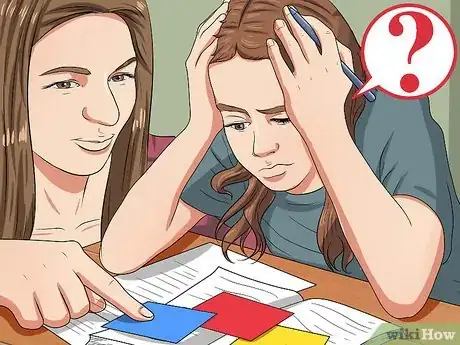
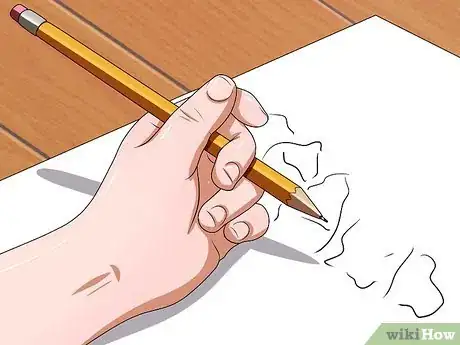
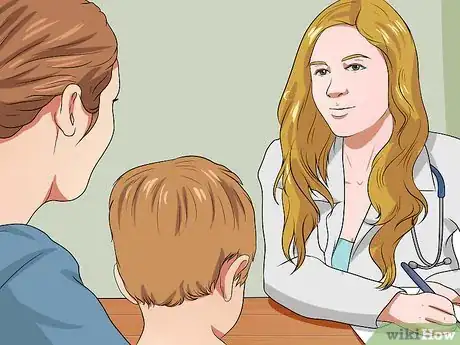
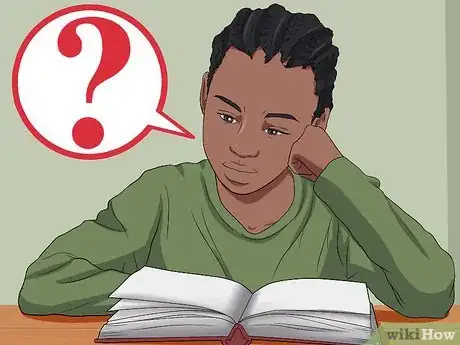

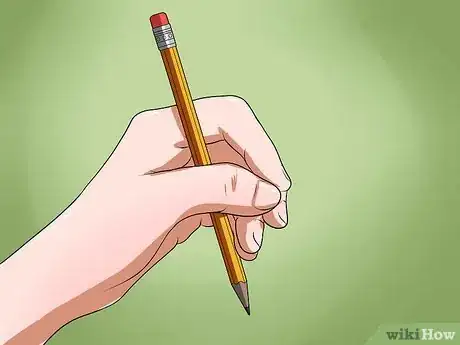
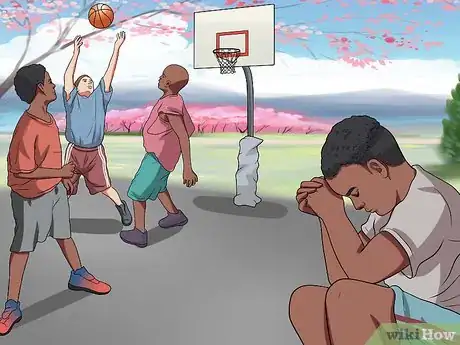
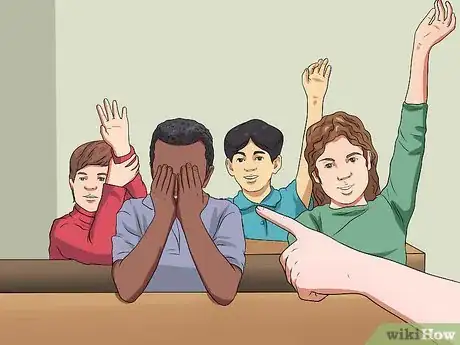
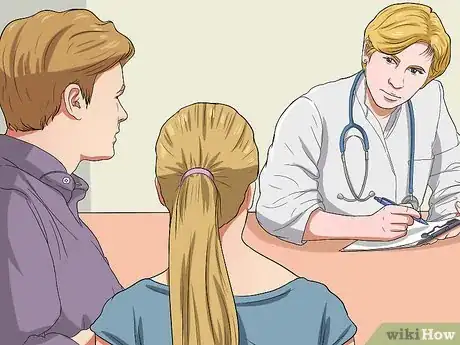
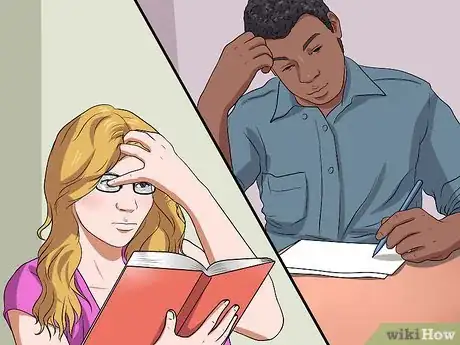
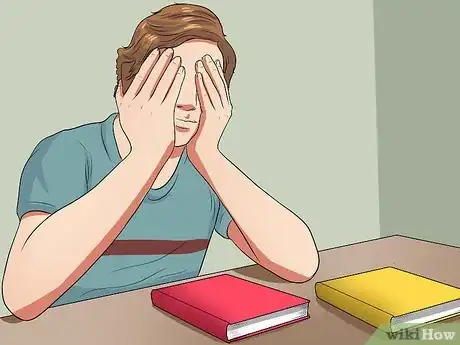

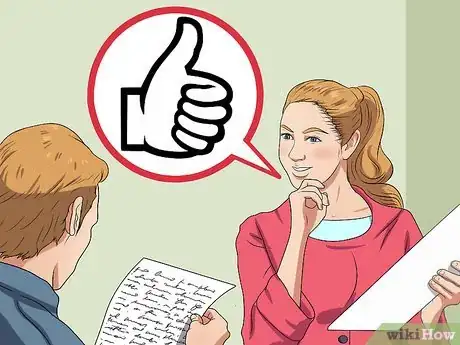


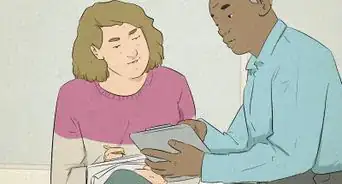
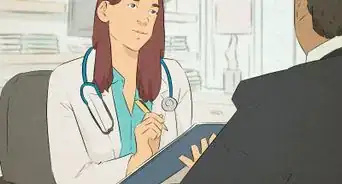


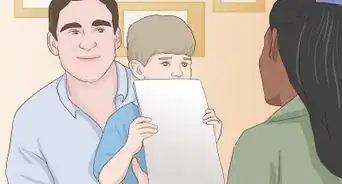
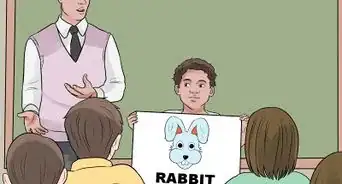











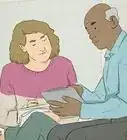
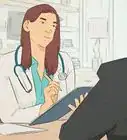



































Medical Disclaimer
The content of this article is not intended to be a substitute for professional medical advice, examination, diagnosis, or treatment. You should always contact your doctor or other qualified healthcare professional before starting, changing, or stopping any kind of health treatment.
Read More...